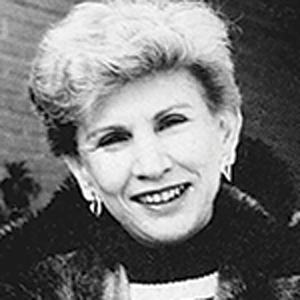 Edith Eva Eger was born on September 29, 1927 in Kosice, Slovakia, which came under the rule of Hungary in 1938. Her upbringing included early training in ballet and gymnastics. She was being groomed for the Olympics but was barred from the team in 1942 when new anti-Jewish laws were enacted by the Hungarian government. Her eldest sister, Clara, was accepted into the Music Conservatory of Budapest, which put her in relative safety for the duration of the war. By March 1944, Edith’s father had been arrested and sent to a labor camp. Edith was forced into the Kosice Ghetto with her mother and older sister, Magda. In May 1944, they were taken by train to Auschwitz. Edith recalled an orchestra playing at their arrival. She was confused during the “selection” and clung to her mother. Dr. Mengele pulled her back into the line of younger people allowed to live. She never saw her mother again. Mengele came back later that evening to find Edith in her barracks and took her to his quarters for his personal use and entertainment. In November 1944, Edith was assigned to ride on top of the German trains carrying weapons and ammunition. The Nazis hoped that the striped uniforms would deter British bombers. For the next six months, she was moved around to various sub-camps of Mauthausen, in Austria, and was finally liberated by the American Army at Gunskirchen in May 1945, just as other prisoners were resorting to cannibalism to stay alive. Edith and Magda recovered in American field hospitals and later found Clara, who had been saved and hidden by her music professor in Budapest. Once Edith made it to the United States with her husband, Albert, and their daughter, she was able to continue her education and eventually became a clinical psychologist. Albert and Edith had two more children and moved to El Paso, Texas in 1955. Connecting Stories: Albert Eger [REDIRECT_ME url=”https://e34.b7e.mytemp.website/survivor-exhibit-english/” sec=”180″]
Edith Eva Eger was born on September 29, 1927 in Kosice, Slovakia, which came under the rule of Hungary in 1938. Her upbringing included early training in ballet and gymnastics. She was being groomed for the Olympics but was barred from the team in 1942 when new anti-Jewish laws were enacted by the Hungarian government. Her eldest sister, Clara, was accepted into the Music Conservatory of Budapest, which put her in relative safety for the duration of the war. By March 1944, Edith’s father had been arrested and sent to a labor camp. Edith was forced into the Kosice Ghetto with her mother and older sister, Magda. In May 1944, they were taken by train to Auschwitz. Edith recalled an orchestra playing at their arrival. She was confused during the “selection” and clung to her mother. Dr. Mengele pulled her back into the line of younger people allowed to live. She never saw her mother again. Mengele came back later that evening to find Edith in her barracks and took her to his quarters for his personal use and entertainment. In November 1944, Edith was assigned to ride on top of the German trains carrying weapons and ammunition. The Nazis hoped that the striped uniforms would deter British bombers. For the next six months, she was moved around to various sub-camps of Mauthausen, in Austria, and was finally liberated by the American Army at Gunskirchen in May 1945, just as other prisoners were resorting to cannibalism to stay alive. Edith and Magda recovered in American field hospitals and later found Clara, who had been saved and hidden by her music professor in Budapest. Once Edith made it to the United States with her husband, Albert, and their daughter, she was able to continue her education and eventually became a clinical psychologist. Albert and Edith had two more children and moved to El Paso, Texas in 1955. Connecting Stories: Albert Eger [REDIRECT_ME url=”https://e34.b7e.mytemp.website/survivor-exhibit-english/” sec=”180″]

